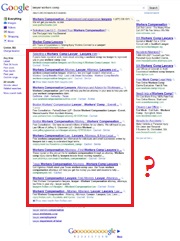 Over the past couple of years, there’s been a sharp increase in complaints about poor quality websites showing up at the top of Google’s search results. In response, Google issued a software update, known as Panda, on February 23, 2011. The fundamental goal of the Panda Update was to downgrade the rank of websites that didn’t offer users unique, valuable information. One website that was mentioned in this regard was eHow.com, which offers many thousands of how-to guides, and has sometimes been referred to as an example of a “content farm.”
Over the past couple of years, there’s been a sharp increase in complaints about poor quality websites showing up at the top of Google’s search results. In response, Google issued a software update, known as Panda, on February 23, 2011. The fundamental goal of the Panda Update was to downgrade the rank of websites that didn’t offer users unique, valuable information. One website that was mentioned in this regard was eHow.com, which offers many thousands of how-to guides, and has sometimes been referred to as an example of a “content farm.”
Panda had a powerful effect, banishing many formerly top-ranking sites to second-class status and elevating other, previously lesser known sites, to the top of the rankings. It didn’t have as significant an impact on eHow as Google wanted, so a subsequent release of Panda was made in April.
Panda is the latest escalation in the war between Google, which wants to rank websites by quality and usefulness, and people who want their website to appear at the top of Google’s search results for certain keywords whether they deserve to or not.
Panda has significantly changed the rules of Search Engine Optimization. Search is the crown jewel of Google’s empire, and quality search results was what put Google into the position they’re in today. They could not afford to allow their search results to be egregiously manipulated.
Google rose to prominence because of their ranking algorithm, which has relied heavily since the beginning on inbound links to indicate which websites should be given more prominence than others. The more sites linking to yours, all other things being equal, the higher your site would rank for keywords that appear on its pages. Sometimes links alone were enough. There’s an old parlor trick where you type the phrase “click here” into Google. The #1 ranking site that comes up is the download site for Adobe Reader even though the words “click here” don’t appear anywhere on the page. Presumably, that’s because so many sites are linking to that page with a hyperlink using the words “click here” as anchor text, telling their viewers how to get the Adobe reader software.
Google has acknowledged in the past that there are over 200 factors in its ranking algorithm. Obviously, these factors carry different weights. With the Panda update, Google has shifted some of the weighting away from inbound links, in favor of website content and user behavior. Make no mistake. Inbound links are still very important. They’re just a little less important than they used to be.
In the next article, we’ll tell you more about what this means and what you should do if you care about how your target keywords rank in Google. In the meantime, you would be wise to focus your attention on making your website content as unique, useful, and engaging as you possibly can.





